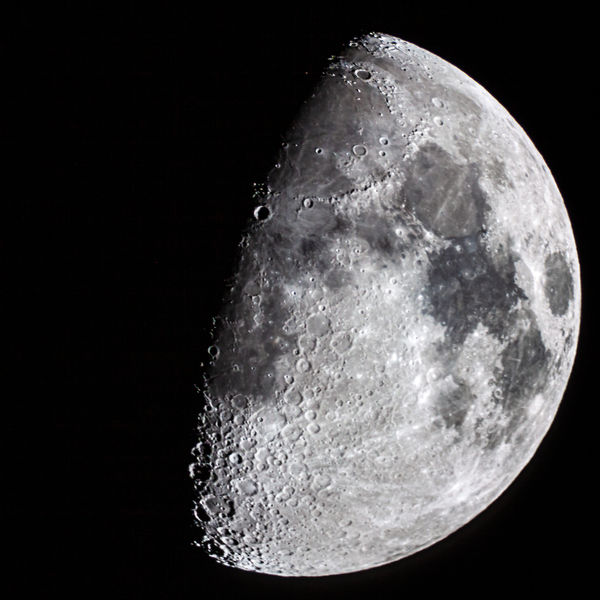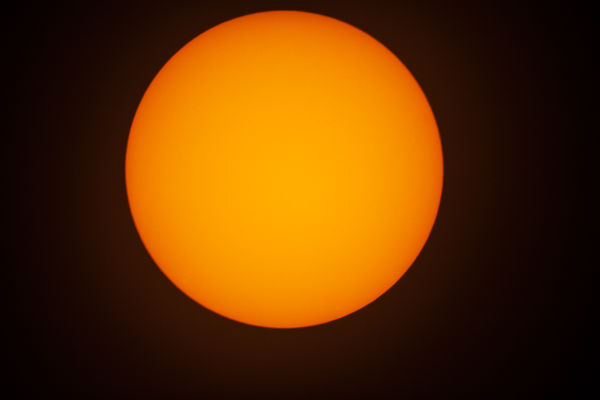Posts for: big-guy
May 14, 2020 16:41:23 #
I have a Celestron Nexstar GPS dual fork and I know I can get 20 second exposures. If I were to get a EQ wedge how much longer could the exposure time go to? 

May 11, 2020 01:25:58 #
SonnyE wrote:
Hi Peter! br I'm one of those try it and see if I ... (show quote)
With overcast skies yet again I have been scouring the web and learning all sorts of things, options, websites etc. Using Stellarium and inputting my cameras with the ocular viewing, not to mention using Stellarium to slew the mount to whatever I want, I am not so patiently waiting for clear skies in a few days to test it all out. Thanks for your thoughts on the matter.

May 9, 2020 12:18:21 #
Railfan_Bill wrote:
Hey Big-Guy, The NextImage5 camera is designed as a planetary camera with a 5 meg sensor. Considering your DSLR has a minimum of 18 Megapixal, a large difference in size and capability.The NextImage5 is great for planetary objects, but not so good for DSOs. DSOs have typically a large FOV whereas, planets have a small FOV. Stick with the DSLR for DSO astrophotography. That is why guide cameras have a very small sensor to track stars.
Thanks to one and all for the info. I will endeavor to make it all stick to the ole brain cells.

May 7, 2020 16:41:29 #
Generally speaking: Copyright © Your Name YYYY
and set the Copyright Status to Copyrighted
and set the Copyright Status to Copyrighted
May 7, 2020 13:36:33 #
Europa wrote:
Here is a nice tool to see what different equipment will do.
http://www.blackwaterskies.co.uk/imaging-toolbox/
I’m not sure if you are aware, but to get more details in the moon, you want to shoot at less than half moon. The shadows help bring out a lot of the detail.
http://www.blackwaterskies.co.uk/imaging-toolbox/
I’m not sure if you are aware, but to get more details in the moon, you want to shoot at less than half moon. The shadows help bring out a lot of the detail.
Very kewl, thanks. Yes, I'm aware and full moon only used as a reference. I am planning to shoot the moon at 20%, 40%, 60% and then doing the reverse and stacking them altogether to achieve a full moon. I know the shadows will not be at the same angle but just curious as to how well I can do this.
May 7, 2020 03:18:00 #
Quick question, I have a Celestron Nexstar 8se SCT with eyepieces from 55 to 12. I also have the T adapter for my dslr and NexImage5 ccd cameras. The dslr uses the 2" and the ccd uses 1.25". When I use the dslr with the f5.6 reducer I can capture 100% (90% without) of the moon and tonight I set up the NexStar but it was zoomed way in on the moon, so much so I can't honestly say what portion of the moon was visible but if I had to guess it would be 10%. Is this normal? and is there any way to capture the entire moon with the ccd? Now if this is normal I can see a great benefit when trying to capture DSO's and I sure wanted to try tonight but the clouds just kept flying by. Can someone here set me straight? Thanks. 



May 6, 2020 10:35:11 #
Woodsman wrote:
Hi there, north part of Ennismore
I see you're into astronomy. Do you belong to any groups? I'm just a fledgling beginner with a big interest. Where so you normally shoot? I like Burleigh Falls, especially with the aurora borealis when it appears.
May 5, 2020 12:51:48 #
May 5, 2020 11:04:24 #
CaptainBobBrown wrote:
We all use various web sites and email for sharing photos but such photos are usually (always?) JPEGs or TIFFs as required by the sharing sites and email limitations on file size. Does anyone use anything besides DropBox for transmitting RAW files? I need to get a bunch of RAW images from a family member so I can process them in Photo Raw before returning as JPEGS.
As you are "needing" RAW files from another family member and not "giving" RAW files and assuming you already have Dropbox, you can send a request for files to that family member which makes their part very easy. I am the coordinator for our local photo group and use this feature all the time. Very simple to do and it sends me an email whenever a file is uploaded so I can then transfer it out of DB keeping space within limits. Hope this helps.

May 4, 2020 20:33:36 #
Much appreciated Ballard. Downloaded both those programs and will try them out. Looks like neither one accepts CR2 RAW files.
May 3, 2020 16:19:01 #
May 3, 2020 16:17:26 #
Here is a moon shot from Monday night. Much more impressed than my first attempt. Seem to be getting much better at the focusing issue. C&C welcome. Processed in LR only. 

May 3, 2020 14:36:20 #
Now that my Celestron Nexstar SCT8 is working properly I set it up on the back deck for a few test shots. The night sky was no problem but this afternoon I slapped the solar filter on and did some viewing and then decided I should take some photos with the dslr. My first 3 shots (damn focusing is touchy) ISO 100 SS 250 turned out OK but the histogram is crammed to the left. Tried a few more at SS 125 and they turned out brighter and I can see the center is brighter than the extremities. My question, what do you solar photographers use for settings and am I on or close to the right track? Second question, is it normal to stack solar images like astro or is it more of a one shot will do the trick? and if stacked what program will handle this? Tried Deep Sky Stacker but after almost 45 minutes it only accepted one frame. Attached is 1 frame at 125 SS. No flares or coronal disturbances that I can see.
Apr 30, 2020 01:11:15 #
The video alone is https://www.youtube.com/watch?v=AJ7fahM5sBQ&feature=youtu.be
Apr 26, 2020 01:39:32 #
Shellback wrote:
Found this from the Community Forum link - might h... (show quote)
I've had many ID's over the years and God only knows which one I used for this. It was a good idea, thanks any way.


